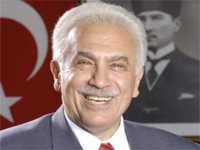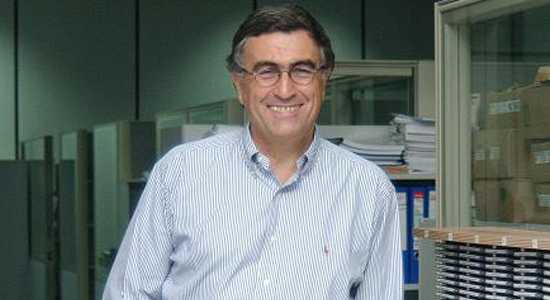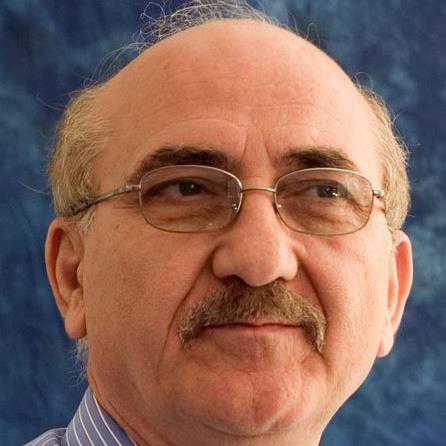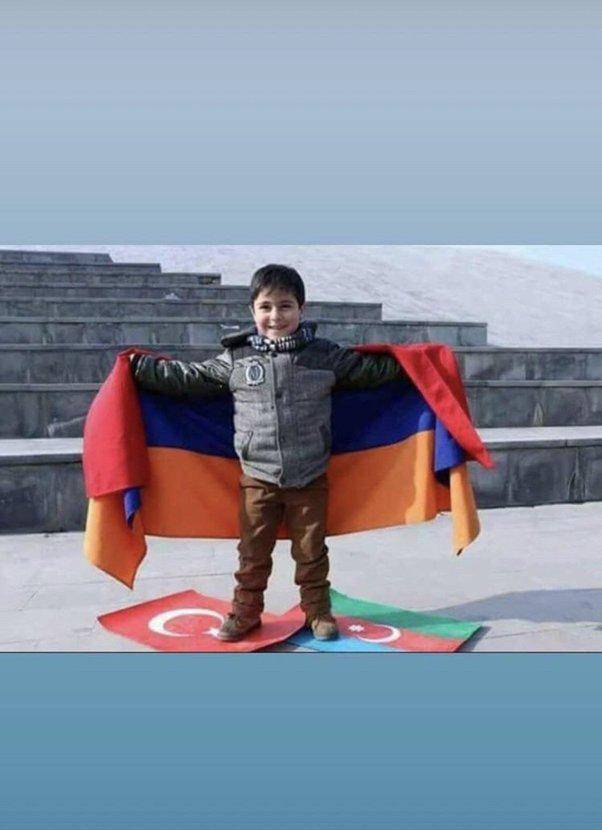By Raffi Bedrosyan, Toronto, 15 November 2013
The conference organized by the Hrant Dink Foundation about ‘Islamicized (Forcibly Islamized) Armenians’ at the Istanbul Bosphorus University in early November broke one more taboo in Turkey. A hidden reality, a secret known by many but which couldn’t be revealed to anyone, whispered behind closed doors but also filed in government intelligence offices, finally broke open into the public.
The late Hrant Dink would be elated to see this conference become a reality, eight years after the first conference about ‘Armenians during the late Ottoman Empire era and the 1915 events’ held at Istanbul Bilgi University, when protesters hurled insults at the conference participants and government ministers labelled them “traitors stabbing Turks in the back”. That conference had also broken a taboo, but Hrant was already a marked man for revealing the identity of the most famous ‘Islamicized Armenian’, Sabiha Gokcen, Ataturk’s adopted daughter and first female Turkish combat pilot, to be in fact an Armenian orphan of 1915 by the name of Hatun Sebilciyan.
It is a known fact that in 1915 tens of thousands of Armenian orphans were forcibly Islamicized and Turkified, tens of thousands of Armenian girls and young women were captured by Kurds and Turks as slaves, maids or wives, tens of thousands Armenians converted to Islam to escape deportations and massacres, and tens of thousands of Armenians found shelter in friendly Kurdish and Alevi villages but lost their identity. What happened to these survivors, or living victims of the 1915 Genocide? Hrant was obsessed with them: “We keep talking about the ones ‘gone’ in 1915, let us start talking about the ones who ‘remained’.”
These remaining people survived, but mostly in living hell. And what’s remarkable, their children and grandchildren are now ‘coming out’, no more hiding their Armenian roots. One of the first was the famous Turkish lawyer Fethiye Çetin, who revealed that her grandmother was Armenian, in her book ‘My Grandmother’. This was followed by another book edited by Aysegul Altinay and Fethiye Çetin, ‘The Grandchildren’, about dozens of Turkish/Kurdish people describing their Armenian roots, without revealing their real identities. Then came the reconstruction of the Surp Giragos Armenian Church in Diyarbakir, which became a destination for many hidden Armenians in Eastern Anatolia to come out. On average, over a hundred people visit the church daily, most of them hidden Armenians. Some come to pray, get baptized or married, but most just visit to feel Armenian, without converting back to Christianity. This has created a new identity of Moslem Armenians, in addition to the historical and traditional identity of Christian Armenians. In a country where only Moslem Turks can work for the government, where being non-Moslem is sufficient excuse for persecution, harassment and attacks, where the word Armenian is used as the biggest insult, it takes courage for someone to reveal that he is now an Armenian and no longer a Turk/Kurd/Moslem. People can easily lose their jobs, livelihood or even lives for changing their identity. Just to give an example of the level of racism and discrimination, an ultra nationalist opposition member of parliament accused the Turkish President Abdullah Gul for having Armenian roots in his Kayseri family. Gul sued her for defamation for being labeled an Armenian; the courts sided with him ordering her to pay compensation for such an insult.
It is difficult to estimate the number of Islamicized Armenians, and even more difficult to predict what proportion of them are aware of their Armenian roots, or how many are willing to regain their Armenian identity. Based on independent studies of the 1915 events, one can conclude that more than 100,000 orphans were forcibly Islamicized/Turkified, and that another 200,000 Armenians survived by converting to Islam or by finding shelter in friendly Kurdish and Alevi regions. It is therefore conceivable that 300,000 souls survived as Moslems. The population of Turkey has increased seven-fold since then. Using the same multiple, one can extrapolate that there may exist 2 million people with Armenian roots in Turkey today, originating from the 1915 survivors. There were even more widespread conversions to Islam during the 1894-1896 massacres, when entire villages were forcibly Islamicized. A couple centuries previously, Hamshen Armenians were Islamicized in northeast Anatolia. The Moslem Hamshentsis, numbering about 500,000, speak a dialect based on Armenian, but never identified themselves as Armenian–until recently. Adding all these forced conversions prior to and during 1915, one can conclude that the number of people with Armenian roots in present Turkey reaches several million; numbers are difficult to accurately estimate, but in any case, easily exceed the present population of Armenia.
The reality is that the secrets of Armenianness whispered for three or four generations after 1915, are now becoming loud revelations of new identities. As evidenced in the recent conference, even Hamshen Armenians have started exploring and reclaiming their long lost roots. During the reconstruction of the Surp Giragos Church and in my travels in eastern and southeastern Anatolia, one out of every three Kurds that I met had an Armenian grandmother in the family. This fact, hidden until recently, is now revealed openly, often leading young generations to reclaim Armenian identities, but without giving up Islam. One interesting observation is that the hidden Armenians were aware of other hidden ones and all attempted to intermarry, resulting in many couples who ended up having Armenian roots from both parents.
The conference attracted numerous academicians, historians and journalists from within and outside Turkey, as well as dozens of presenters of oral history. One of the most dramatic presentations was about Sara, a 15-year-old Armenian girl from Urfa Viranshehir, who was captured by the Turkish strongman of the region, Eyup Aga. Eyup wanted to take Sara as his third wife. When Sara refused, Eyup killed her mother. When Sara refused again, Eyup killed her father. When Eyup threatened to kill Sara’s little brother, Sara couldn’t resist any more, and married the killer of her parents, on condition that her brother would be spared and she would keep her name. But her brother was also eventually killed. As she resisted Eyup’s advances, she was repeatedly raped and was pregnant 15 times, giving birth to 15 babies, who all died prematurely. Eyup constantly tortured her, even marking a cross on her body with a knife. The family also mistreated her as an outcast, and she had a hellish life to the end. At the end of the story, the presenter, a Turkish academician, revealed that Eyup and the family who committed these crimes against Sara were her own family. Her final statement was even more dramatic than the story: “We always hear stories told by the victims, it is now time for the perpetrators to start talking about and owning their crimes”.
There are new revelations about how the Turkish government kept tabs on Islamicized Armenians. Apparently, the government kept records of every Armenian village or large Armenian clan which was forcibly Islamicized in 1915. It was recently discovered that the identification cards of hidden or known Armenians had a special numbering system to identify them secretly. There are anecdotes that a few Turkish candidates for air force pilot positions were turned away even though they qualified after rigorous tests, when government records revealed that they come from Islamicized Armenian families.
It is of greater concern to us how the Islamicized Armenians are being dealt with by Armenians. It seems that the Istanbul Armenian community and more critically, the Istanbul Armenian Patriarchate are unable or unwilling to accept the hidden Armenians coming out as Armenians, unless these people accept Christianity, get baptized and speak Armenian. But it is unrealistic to expect the new Armenians to comply with these requirements. Since Armenians in Turkey are all defined as belonging to the Armenian Church, if the newcomers are rejected by the patriarchate, they become double outcasts, not only from their previous Moslem Turkish/Kurdish community, but also outcasts from the Armenian community, cannot get married, baptized or buried by the Church and cannot send their children to Armenian schools. If they have made a conscious decision to identify themselves as Armenian, a risky and dangerous initiative under the present circumstances, they should be readily accepted as Armenians, regardless whether they stay Moslem or atheist or anything else. Relationships get even more complicated as there are now many families with one branch carrying on life as Moslem Turk/Kurd, another branch as Moslem Armenian and a third branch as Christian Armenian. The Echmiadzin Church is more tolerant. It has issued the following statement: “Common ethnicity, land, language, history, cultural heritage and religion are general measures in defining a nation. Even if one or more of these measures can be missing due to historic reasons, such as inability to speak the language, or practise the religion, or lack of knowledge of cultural and historic heritage, should not be used to exclude one’s Armenian identity”. But Charles Aznavour’s approach is the most welcoming when he states: “Armenia should embrace the Islamicized Armenians and open its doors to them”.
After Armenia, Karabagh and the Diaspora, there is now an emerging fourth Armenian world, the Islamicized Armenians of Turkey. Accepting this new reality will help both Turks and Armenians understand better the realities and consequences of 1915.









Sabiha Gokcen & Dersim Massacres
It’s rumored that Sabiha Gokcen, as a pilot, was sent with a squadron to bombard Dersim in late 1930s. However, she returned without dropping a bomb. Dersim was known to harbor Armenians.
It is speculated that Sabiha knew who she was, the daughter of an Armenian, and because of it she refrained from completing the task.
Is this a made up story following Hrant Dink’s “discovery” of Sabiha’s identity? Are there any documents verifying whether she indeed was in the squadron, and she “refused” to participate in the bombardment?
Could any reader shed some light on this matter?
Thankfully,
Aren